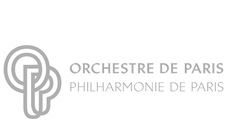
Ballets Russes album review – Gramophone
Petrushka comes home. To Paris if not the Théâtre du Châtelet. Following on from Klaus Mäkelä’s handsome coupling of Stravinsky’s Rite and Firebird ballets (5/23) the headline feature of this terrific Petrushka is characterisation. It’s a performance full of animation and incident and from the Orchestre de Paris and their impressive line-up of wind soloists a dancer’s sensibility in the way the work’s cast of characters are drawn and move. The puppetry, if you like, is exemplary.
Mäkelä opts for the 1947 revision and takes full advantage of its marginally leaner, more streamlined, orchestra in making the inner detail pop. The hum of Stravinsky’s opening scene where the business of the thronging crowds is so vividly conveyed by the composer is alive with fleeting details, all adding to the wash of colour and merriment. But there is plenty of air around the sound. And then the Showman’s plaintive flute silences the crowd, mesmerising them and us with his beguiling phrasing. His puppets’ Russian Dance is a vivid woodcut drawn in keen rhythm and brilliant articulation. That’s another defining feature of the performance.
Backstage it’s the personality – and presence – of the solo work that brings these tableaux to life. The bass clarinet traces the sultry menace of the Moor and a decidedly awkward bassoon (anything but en pointe) marks out the waltz rhythm for the ballerina in anticipation of the Moor’s graceless partnering.
Back among the Shrovetide crowds the character dances exude a physical muscularity, the dancing bear as coarse as the coachmen are immaculate. Their swagger is infectious. And Mäkelä really catches the poignancy of the ghostly final pages where Petrushka’s demise briefly but memorably achieves human proportions.
The Debussy couplings are equally fine. Jeux, of course, is not in the least about tennis but rather seduction. Debussy’s large and exotic orchestra feels illuminated from within here. It positively shimmers with playful interactive colours. In essence this is the most elaborate and protracted foreplay in the history of music.
Speaking of seduction, Nijinsky’s sinewy form hovers over L’après-midi d’un faune, all manner of sensuousness addressed by that flute (marvellous) and the effulgence of that slowly emerging melody as it’s taken up in the strings.
A most satisfying aural banquet for sure.
Gramophone Magazine, Edward Seckerson, April 2024



